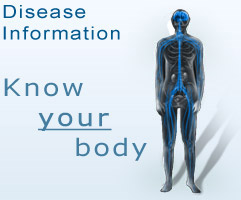Bronchiectasis
What is bronchiectasis?
Bronchiectasis is a chronic lung condition. It is characterised by permanent widening of the airways and thickening of the walls of the airways.
Air is carried into your lungs through a series of branching tubes (called bronchi). The bronchi contain glands that produce small amounts of mucus, which helps to keep your tubes moist and traps the dust and germs that you breathe in. Usually, the mucus is moved away by tiny hairs (called cilia) which line the tubes. When your bronchial tubes get damaged, however, they cannot clean themselves. This results in build-up of mucus, making the lungs more susceptible to infections and scarring. This damage to the lungs is known as bronchiectasis.
All age groups, from infants to the elderly, may be affected by bronchiectasis.
What are the causes of bronchiectasis?
Bronchiectasis has a wide variety of possible causes. These include:
- genetic disease, e.g. cystic fibrosis (where the mucus in the bronchial tubes is too thick) or immotile cilia syndrome (where the hairs lining the bronchial tubes do not work properly)
- problems with the immune system, e.g. persons with HIV or those with immune deficiencies that were present at birth
- previous childhood infections, e.g. tuberculosis, whooping cough, pneumonia or measles
- obstruction of the airways with impairment of drainage, e.g. foreign bodies in the lung or enlarged lymph nodes
- allergic bronchopulmonary aspergillosis (an allergy to a certain type of fungi that damages the lungs)
- severe acid reflux (heartburn), although this is rare
- rheumatoid arthritis.
Sometimes, however, the cause may be unknown.
What are the signs and symptoms of bronchiectasis?
The most common symptom of bronchiectasis is chronic cough producing large amounts of sputum. Patients often present with symptoms like a wheezy chest, shortness of breath, chest pain or coughing up blood. Another sign that may indicate underlying chronic lung disease is clubbing of the fingers (enlargement of the fingertips).
How is bronchiectasis diagnosed?
Tests used to diagnose this condition include:
- chest X-ray - which is a picture of the lungs and heart
- sputum test - to see which organisms are infecting the lungs
- lung function test - this is a test where the patient blows air into a machine which measures the volumes of air coming in and out of the lungs
- blood test - to determine the underlying cause of bronchiectasis
- sweat test - if cystic fibrosis is suspected.
- high-resolution CT scan of the lungs - this is a more specialised test that creates pictures of your lungs and heart. This is most commonly used to diagnose bronchiectasis and the areas involved
- bronchoscopy - this is a test where a flexible tube is placed into the lungs and images are produced of your airways, assisting to determining the cause and extent of bleeding or blockage in the airways.
What are the treatment options for bronchiectasis?
As there is no cure for bronchiectasis, treatment is aimed at reducing symptoms and improving quality of life.
The goals of treatment are to:
- treat underlying causes and infection
- remove mucus from the lungs
- prevent complications.
Treatment options include the following:
- It is recommended that patients with bronchiectasis receive annual influenza and pneumococcal vaccines.
- Avoiding smoking.
- Treatment with medication can improve airflow, similar to treatment for asthma and chronic obstructive lung disease, e.g. inhalers. These inhalers, called bronchodilators, work on the muscle in the wall of the airways and relax these muscles.
- Treatment with antibiotics may be used to treat infections. This is usually determined by sending sputum to the laboratory to see which organism is causing the infection and to check its sensitivity to certain antibiotics. Antibiotics can be used if the condition worsens (an increase in the severity of a disease or its signs and symptoms) for 10 to 14 days or, if the organisms are resistant, your specialist may consider long-term treatment with antibiotic or cyclic treatment.
- Chest physiotherapy, postural drainage (an airway clearance technique that uses gravity to help clear the airways) and breathing exercises - these assist with clearing mucus in the airways. Very thick mucus can be thinned and made easier to mobilise with inhaled (nebulised) saline.
- If a cause can be determined for bronchiectasis, your treating doctor should treat the underlying cause.
- There are indications for surgery and removal of a lobe of the lung in patients with bronchiectasis.
- Surgery will be considered in patients with severe bleeding or recurrent severe infections, and only considered if localised to one area.
- A lung transplant may be considered in cases of severe disease that is unresponsive to medical therapy.
Complications
- The most common complication is recurrent bouts of infection with hospitalisation.
- Other complications include risk of lung abscess (a lung infection accompanied by accumulation of pus and destruction of tissue), spread of infection to the rest of the body and severe coughing up of blood (called haemoptysis) which can be serious.
- Long-term complications include heart failure, atelectasis (collapsed lung) and respiratory failure. Respiratory failure is a condition in which not enough oxygen passes from your lungs into your blood. The condition can also occur if your lungs cannot properly remove carbon dioxide (waste gas) from your blood.
References
1. BRITISH LUNG FOUNDATION. March 2014. Bronchiectasis. Website. http://www.blf.org.uk/
2. NHS CHOICES. 29 August 2013. Bronchiectasis. Website. http://www.nhs.uk/
3. NATIONAL INSTITUTES OF HEALTH (NIH). National Heart, Lung and Blood Institute. 2 June 2014. What is bronchiectasis? Website. http://www.nhlbi.nih.gov/
4. HEALTH24. 13 February 2013. Bronchiectasis. Website. http://www.health24.com/
5. UP TO DATE. Diagnosis and treatment of bronchiectasis.
 TransmedBanner4.jpg)

